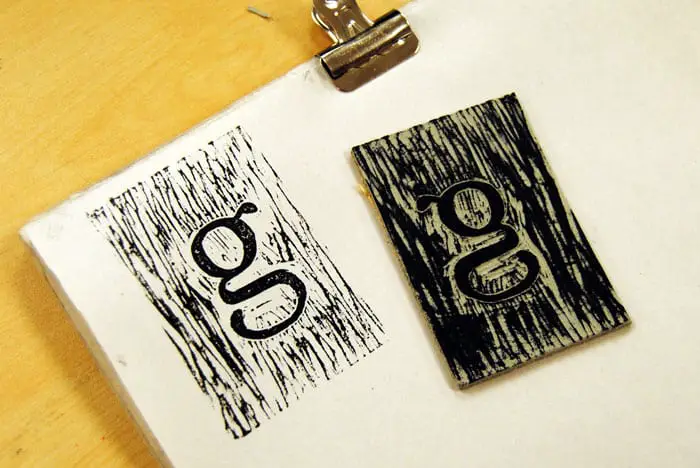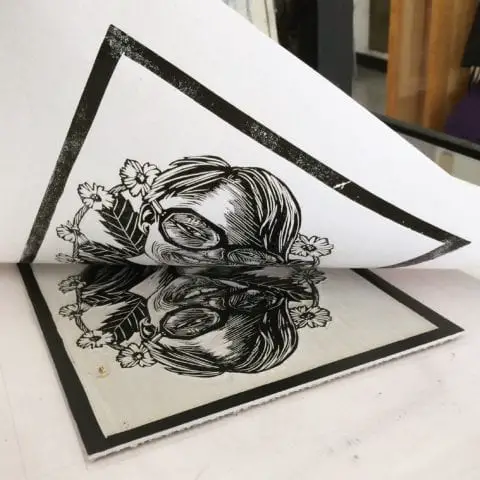
Printmaking is an art that is generally defined as the creation of copies of images transferred into the paper or on fabric, parchment, or other things. This is done through various techniques and processed by the artist or other people supervising it. These arts have original copies. The original is then copied multiple times to create more.
One of printmaking’s misconception is its definition only revolves on books, newspapers, and other prints. However, on a side note, printmaking is also translated as art created by an artist using printmaking tools instead of the usual paint, brushes, chisels, and other art materials.
Printmaking consists of different techniques, and these techniques names have a different effect on printmaking. With names such as woodcut, etching, and linocut, printmaking takes a different view that would let others understand the other side of printmaking.
Printmaking Techniques

Printmaking Techniques are divided into four categories. These categories differ on the materials used, the processed done, as well as how to correctly use the ink to create different styles.
- Planographic
Planographic printing uses a flat surface instead. This is different from relief painting and intaglio printing. This technique uses water and oil.
- Stencil
Stencil printing transfers patters or design using a brush, spray. The ink or paint is then brushed and sprayed on the open areas of the stencil cut made from metal or cardboard.
- Intaglio
This printmaking technique is the reverse of relief printmaking. Rather than leaving the recessed area ink-free, the sunken area holds the ink. The images are then transferred using a heavy roller.
- Relief painting
Printmaking relief is one of the categories of printmaking where the method includes using a block of wood, linoleum, or matrix. The design is etched on the surface of these blocks and matrix.
The ink is then applied to the surface using a roller. The recesses areas will remain ink-free. Thus, when contact with the paper, the ink is transferred, leaving the recessed area ink-free. This is when the image is created.
This technique is simplistic and accessible to use, with only a few tools required. There is no need to use machines such as a printing press to rub or press the paper of fabric. Rather, a roller or a brayer will already help.
The tools used in printmaking relief are also fundamental and easy to use and find. The tools differ in each relief painting techniques. Printmaking relief techniques are considered traditional.
Printmaking relief includes woodcut, metal cut, etching, linocut, and rubber stamp. The traditional printmaking with movable types is likewise printmaking relief techniques. Considered as one of the traditional families of printmaking, printmaking relief also has modern developments.
Kinds of Printmaking Relief

There are different kinds of printmaking relief. These techniques have been practiced in the old times and are still being done up to these days. Most of these techniques are easy to use but are time-consuming and need careful considerations.
- Woodcut
Considered as the oldest and most common printmaking relief, woodcut is a done when an artist used a block of wood or plywood typically from a birch or fir tree. The image is carved into the wood with the use of gouges or carving tools. After carving, ink is then applied on the surface. The cut or recessed surface is left with no ink. Thus, when transferred into the paper, the parts with ink will be transferred, leaving the recessed part ink-free. This way, the image is created and produced.
- Metal Cut
Another printmaking relief is the metal cut. There are two different techniques under the metal cut.
The first one has the same concept as woodcut, but instead of wood, a think metal plate is used. The unprinted areas are cut. The result looks the same as woodcut, so experts have a hard time distinguishing which is woodcut and which one is a metal cut. Most of the images from the metal cut are related to religion.
The second technique consists of a drastic change from black prints to white. The prints are in white printed on a black background. This was easier to determine by the experts.
- Linocut
This type of printmaking relief is the same as woodcut, but instead of using blocks of wood, linoleum is used. Linoleum is made of wood flour, cork dust, and other minerals and compound pressed together with linseed oil. Compared to woodblocks, linoleum is easy to carve because it is softer.
- Rubber stamping
This is another printmaking relief technique that is still commonly used today. Rubber stamping or stamping is a type of printmaking where ink is applied to a carved image or pattern into a sheet of rubber. This rubber is attached to a wood or block for stability.
Relief Printing using Polystyrene
Printmaking relief is easy and convenient to try at home. One can do it with easy guides. Learn how to do relief painting using polystyrene.
- Draw your design
Start by drawing different patterns and designs on a piece of paper. Different line patters are best for this technique.
- Prepare the polystyrene
Cut the polystyrene thinly and into the desired shape. Make sure it is flat and smooth, with no rough edges sticking out. Once it is ready, the picture can now be carved into the polystyrene. Use the carving tools. Practice using spare polystyrene to see how the carving looks.
- Prepare the Ink
Use a tray or paper for the ink. Spread it thinly in the tray. Avoid squeezing too much. Roll the ink up in one direction using the roller. Keep it rolling until the ink is thin and even on the roller.
- Ink to the polystyrene
Apply the ink on the polystyrene gently and carefully. Roll the roller back and forth in any direction you want to keep the block covered well. Add more ink if necessary.
- Polystyrene block into the Paper
Press the polystyrene block into the paper. Avoid moving it so the image won’t be damaged. Press down the block and take another paper to cover it. Use a rolling pin or any heavy flat object to gently press the polystyrene block on the paper.
Gently peel the paper off the polystyrene block to avoid smudges. Then, viola, your relief print is ready and all good.
Conclusion
Printmaking relief paved the way for modern printmaking. Even the old and traditional techniques are still used today. These printmaking relief techniques will never lose its importance in the development of humankind.
A lot of people failed to realize the importance of printmaking relief. Some are even oblivious that they don’t realize they are already practicing printmaking, such as rubber stamping. Relief printmaking is a part of history that will always be there to help people.
The challenge now lies in how people will continue to practice and preserve the art of relief printing, which has inspired the modern and convenient printmaking ways used now.

